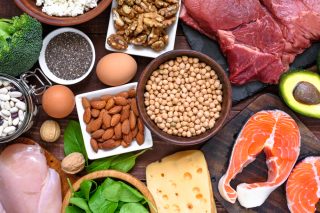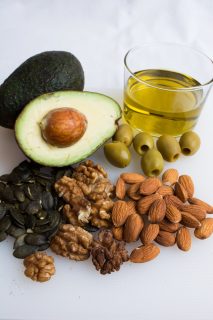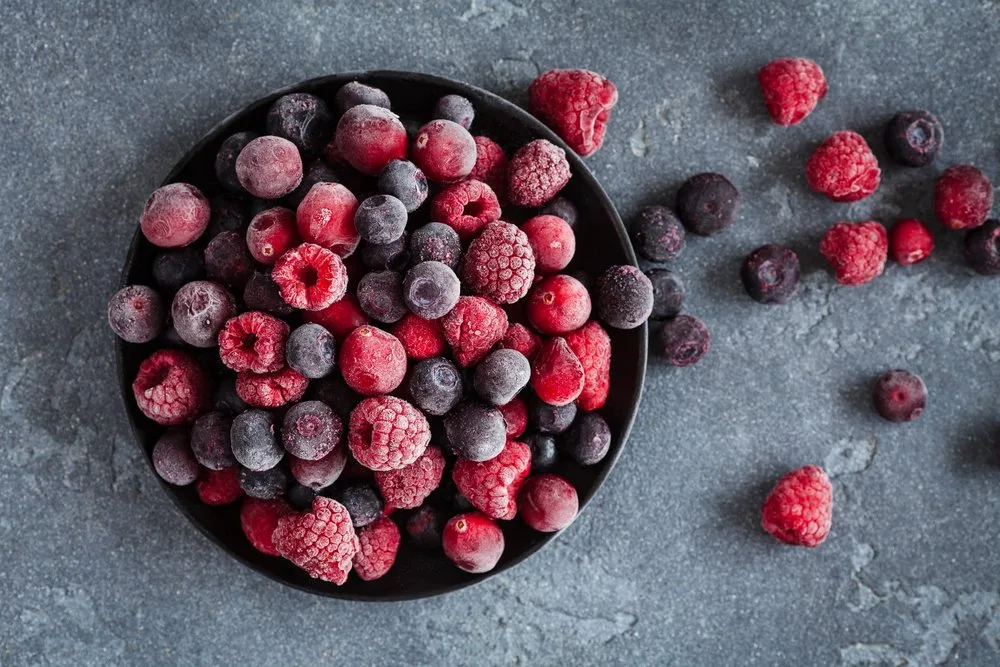We’ve all heard of diabetes but many of us don’t know much more about it than that there are two types. Actually, that isn’t the truth, there are four different types of diabetes. Some types of diabetes are largely preventable through a healthy diet and lifestyle. But what are the different types and how do you know whether or not to go to see your doctor? A healthy diet and lifestyle can significantly aid in reducing your risk. But what foods are beneficial when it comes to the prevention and management of diabetes?
What is diabetes?
Diabetes is, in essence, is a metabolic disease that causes high blood sugar. Its proper name is diabetes mellitus but it is most commonly just referred to
as diabetes. It’s a disease that means that either your body can’t make enough insulin or, alternatively, the insulin it does make cantle used effectively by the body. Insulin is a hormone that transfers sugar from the blood into the cells. Once there, it can either be stored or used as energy. There are actually four different types of diabetes; type 1, type 2, pre-diabetes, and gestational diabetes.
Type 1: This type is an autoimmune disease where the immune system attacks the pancreas which is where insulin is made. It is, as yet, not known what causes this attack and about 10% of people who suffer from diabetes have type 1.
Type 2: It occurs when the body becomes resistant to insulin. As a result, sugar builds up in the blood and causes diabetes type 2. It was previously only associated with older members of the population but nowadays affects a large part of the youth population. This is due to poor lifestyle, dietary, and exercise habits.
Pre-diabetes: Essentially, pre-diabetes means that the blood sugar is higher than it should be but not yet high enough to be diagnosed as diabetes type 2. It can usually be effectively managed and prevented from turning into full-blown type 2 diabetes with lifestyle changes.
Gestational diabetes: Occurs during pregnancy and is usually caused by insulin-blocking hormones produced by the placenta. Mostly, it can be controlled through diet and exercise and typically resolves itself once the baby is born.

Africa Studio/Shutterstock
What are the symptoms?
Symptoms of diabetes generally differ only a little between the different types as well as between genders. Typically, according to Healthline, symptoms include:
- Weight loss
- Increased thirst
- Blurred vision
- Extreme fatigue
- Increased hunger
- More frequent urination
- Sores not healing
Symptoms of diabetes in men might also include a decreased sex drive, erectile dysfunction, and poor muscle strength. Whereas women may experience urinary tract infections, yeast infections, and dry, itchy skin. When it comes to gestational diabetes, most women don’t experience any symptoms. Instead, it’s usually only detected through routine tests between the 24th and 28th weeks of pregnancy.
What are the risk factors?
When it comes to diabetes type 1, it’s likely that it’ll be diagnosed during childhood or adolescence. When it comes to Type 1, the only risk factor is genetic. On the other hand, type 2 is normally thought to be largely preventable.
Risk factors for type 2 diabetes include
- Being over 45
- Having a genetic predisposition (a parent or sibling has it)
- Being overweight
- Not being physically active
- Having had gestational diabetes
- High blood pressure
- High cholesterol
- Ancestry
Risk factors for gestational diabetes include:
- Being over 25
- Having had gestational diabetes in the past
- Being overweight
- A family history of type 2 diabetes
- Suffering from PCOS (polycystic ovarian syndrome)
- Having given birth previously to a baby weighing 9 lbs or more
Eating for diabetes
When it comes to controlling it, the best management is through diet and exercise. The main goal when it comes to eating should be to manage and control blood sugar levels. According to Healthline, these are some of the foods you should be eating to help control or even prevent diabetes type 2.
Fish

artem evdokimov/shutterstock
Particularly fatty fish is one of the healthiest foods you can possibly eat whether you have diabetes or not. Ideally, you want fish that is rich in omega-3 fatty acids like salmon, sardines, anchovies, herring, or mackerel.
Leafy greens
They’re great for you for a number of reasons. They’re low in calories and low in carbohydrates that are absorbed by the body. This means that they have a very low impact when it comes to blood sugar levels. They are also great sources of vitamins and minerals including vitamin C. Examples of these include spinach, kale, and cabbage.
Avocado
They contain less than a gram of sugar and are low in carbohydrates but high in healthy fats and fiber. Eating them will not increase your blood sugar  levels and is also associated with an overall healthier diet and lower BMI. Some research even suggests that avocados contain a specific fat molecule that reduces insulin resistance.
levels and is also associated with an overall healthier diet and lower BMI. Some research even suggests that avocados contain a specific fat molecule that reduces insulin resistance.
Eggs
Overall, eggs are really good for your health. One of the major benefits is that they keep you feeling fuller for longer meaning that you are less inclined to snack. They are known to decrease inflammation, improve insulin sensitivity, increase ‘good’ cholesterol and reduce bad cholesterol.
Beans
They’re rich in vitamin B and usually easily available and cheap making them one of the best foods to add to your diet. Beans are also high in fiber and have a low GI (glycemic index). Some studies have also directly linked them with a reduced chance of developing type 2 diabetes.
Nuts
Mostly, nuts contain a lot of fiber but are low in carbohydrates. Research has shown that they are great for reducing blood sugar levels and lowering levels of bad cholesterol. They may also be beneficial for improving heart health.
The Cleveland Clinic recommends walnuts, almonds and pecans. They are a great source of protein, vitamins, minerals, fiber, healthy fats and antioxidants and they reduce LDL cholesterol and promote heart health. Consume in small amounts as they are high in calories. Add to salads, oatmeal and yogurt. If you are trying to watch your calorie intake, buy the 100 calorie packets in a box. They may cost a little more, but they help with portion control. 1 serving = 1 carb
Broccoli
It’s one of the most nutritious vegetables available and is packed with nutrients but low in calories and carbohydrates. Broccoli is very high in vitamin C and magnesium, both of which are hugely beneficial for the body. Eating broccoli sprouts has also been associated with lowering insulin levels and protecting against cellular damage. In fact, one study found that “consuming broccoli sprouts led to a 10 percent reduction in blood glucose in people with diabetes”.
The Cleveland Clinic recommends these too…
Cleveland Clinic says you should eat foods with a low glycemic index (which represents the total rise in a person’s blood sugar level after eating the food) and provide important nutrients you need to stay healthy. Here are two great additions to your meal choices.
- Sweet potatoes. A great source of vitamin C, potassium and fiber. Add cinnamon, cloves, nutmeg or allspice for extra flavor. ½ cup cooked sweet potato = 1 carb serving
- Berries. They are full of antioxidants, vitamin C and fiber. Add to salads, cereal, summer desserts and yogurt. 1 cup of strawberries, blue berries or raspberries = 1 carb serving
Other foods that are beneficial for the management of diabetes and reduction of insulin or blood sugar levels include; garlic, squash, strawberries, apple cider vinegar, flaxseeds, extra virgin olive oil, greek yogurt, and chia seeds.
What not to eat
Top 10 offenders according to Cleveland Clinic
- Sweetened drinks. These include regular pop/soda, fruit punches and iced teas. These are loaded with sugar and calories, and they usually have little or no nutritional value. Instead, try infusing plain water with different berries and fruits so you can enjoy the natural sweetness.
- “Designer” or specialty coffee drinks – including frappuccinos or cappuccinos. That “once a day special treat” can add up to lots of extra sugar, calories and saturated fat. Instead, go for straight java, either black, with an alternative sweetener or a small splash of skim milk.
- Whole milk. It has too much fat, which can lead to weight gain. Switch to 2% , 1% – or even better: skim milk. Keep in mind that one cup of skim milk has 12 grams of carbohydrates. If you don’t like milk or are lactose intolerant, you can drink almond milk, rice milk or soy milk instead—but remember to get the low sugar varieties.
- Hot dogs. These grilled little favorites are still high in saturated fat and sodium—yes, that even includes turkey dogs! Try to avoid them or eat them only occasionally.
- Packaged lunch meats. These are also high in saturated fat and sodium. Check your deli for low sodium meats—or better yet use sliced meat that you’ve roasted at home to make your sandwiches. Also remember that sandwich toppings can be very unhealthy too (think high-fat mayonnaise). Instead add flavor to your sandwiches with mustard, veggies and/or a little bit of hummus.
- Sweetened cereals. These are high in carbohydrates because of the added sugar. Go for the plain cereals and add a little fruit or artificial sweetener.
- Regular pancake syrup. It’s very high in carbohydrates. Light or low-calorie syrup usually contains at least half the carbs of regular. And with these lighter syrups, remember that the serving size is still small. Take a look at the food label and use sparingly.
- Sherbet. Many people believe sherbet is a good alternative to ice cream, but a half cup of sherbet has almost double the carbohydrates of a half cup of ice cream.
- Fast food baked potatoes with all the fixin’s. You take a relatively healthy item—the plain baked potato—and add cheddar cheese, butter, sour cream, ranch dressing or bacon and it just turned into a high-sodium, fat laden disaster. The same goes for nachos and other cheese-covered appetizers when eating out.
- Anything fried. We know fried foods are not good for anyone. The fat is absorbed into the food and leads to high cholesterol and weight gain which can increase your risk of developing type 2 diabetes or worsen control if you already have diabetes. This goes for everything from French fries to fried chicken to that panko-crusted tilapia at your favorite restaurant. Try baking or broiling your food or even consider checking out the new air fryers that use hot air instead of oil. They are a healthier option than deep-fat fryers.
References
https://www.mayoclinic.org/diseases-conditions/diabetes/symptoms-causes/syc-20371444
https://www.healthline.com/health/diabetes#treatment
https://www.niddk.nih.gov/health-information/diabetes/overview/what-is-diabetes
https://www.healthline.com/nutrition/leafy-green-vegetables
https://www.healthline.com/nutrition/16-best-foods-for-diabetics#9.-Broccoli
https://onlinelibrary.wiley.com/doi/abs/10.1002/mnfr.201900688





![women [longevity live]](https://longevitylive.com/wp-content/uploads/2020/01/photo-of-women-walking-down-the-street-1116984-100x100.jpg)









